Are you ready to enter the world of Lhasa Apso colors?
Lhasa Apsos are one of the oldest dog breeds in the world. This little Himalayan dog was popular with Buddhist monks and Dalai Lamas centuries ago!
These dogs are so adorable that they are one of Hollywood’s favorite dog breeds. Stars like Ellen Degeneres, Elizabeth Taylor, Dolly Parton, and Jane Lynch were huge fans of Lhasa Apsos. After just one look at this colorful breed, it’s easy to see why.
Let’s see all the gorgeous Lhasa Apso colors to fully understand their appeal and popularity:
Standard Coat Colors
Coat colors are determined by a series of genes that are passed on from generation to generation. While some might think that the combinations are endless, most of the time the dogs will need to have a specific appearance that will allow them to be registered as a certain breed.
Some Lhasa Apso colors are considered a part of the breed standard set by local major kennel clubs. If you live in the United States, we’re talking about the American Kennel Club (AKC).
In the case of Lhasa Apsos, there are eight coat colors that are considered standard by the AKC. If you have a dog in one of these shades, you can participate in official dog sport events and conformation shows.
It’s important to note that the American Lhasa Apso Club allows all coat colors. So, when I’m talking about the Lhasa standard, I am only considering the AKC’s opinion.
Here’s what colors are considered standard:
1. Black Lhasa Apso
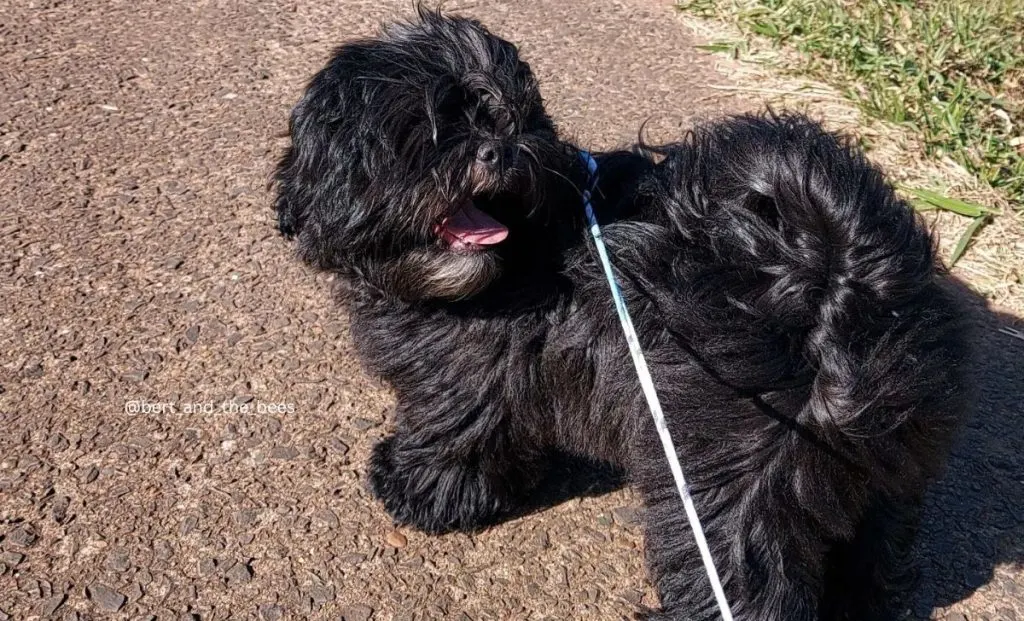
While Lhasa Apsos are typically known for their light shades, solid black dogs are allowed by the AKC. These dogs will be almost entirely black, and this includes black noses, eyelids, mouths, and paw pads.
Some minor white markings are allowed on the dog’s chest and stomach, but they shouldn’t be too prominent.
Black Lhasa Apsos are extremely rare, especially if they are solid black. Getting a pure black Lhasa Apso puppy in a litter is always quite a surprise.
2. Black And Tan Lhasa Apso
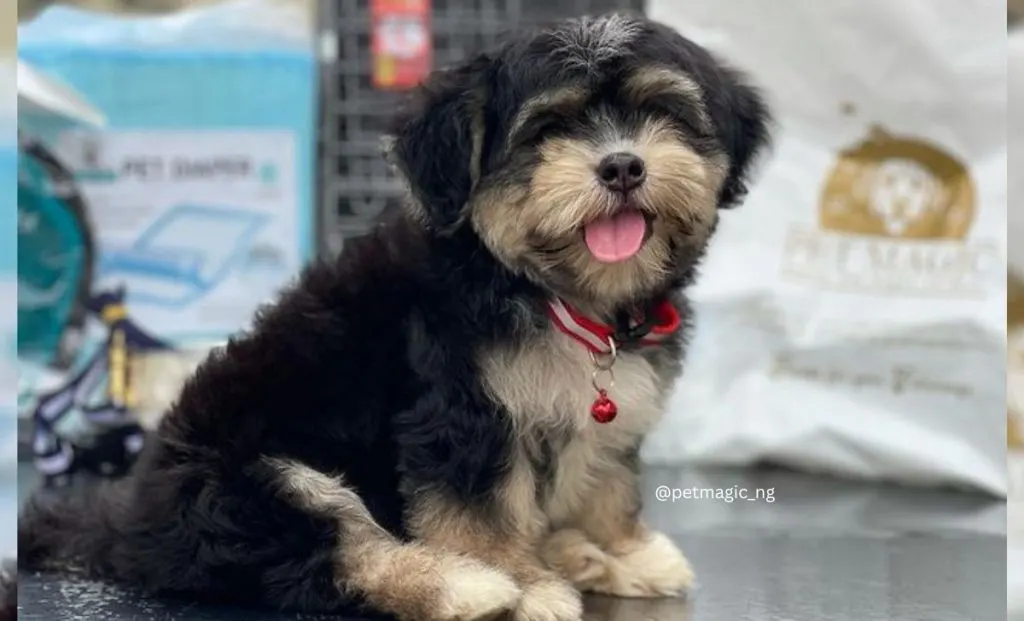
Black and tan is one of the most common Doberman coat colors. It is also a common Rottweiler shade. I bet you didn’t expect it to be one of the most common Lhasa Apso colors, as well!
Black and tan Lhasa Apsos have a black base coat and standard “Doberman tan markings” that are distributed on their chest, legs, muzzle, face, and eyebrows.
However, due to Lhasa Apsos’ long hair, you might not notice the similarities in the markings at first glance.
Also, these pups might have some white spots on their stomach, chest, and feet. These white markings might hide the tan, confusing these pups with solid black Lhasa Apsos.
3. Golden Lhasa Apso

Lhasa Apsos are sometimes known as dogs with a coat of gold, and after looking at this pup, you’re probably realizing why this is.
These pups come in a shade that varies from light gold to wheat, but it’s rarely as prominent and vivid as is the case with Golden Retriever colors, for example.
Just as is the case with most other colors, golden Lhasa Apsos can come with white markings.
4. Red Lhasa Apso
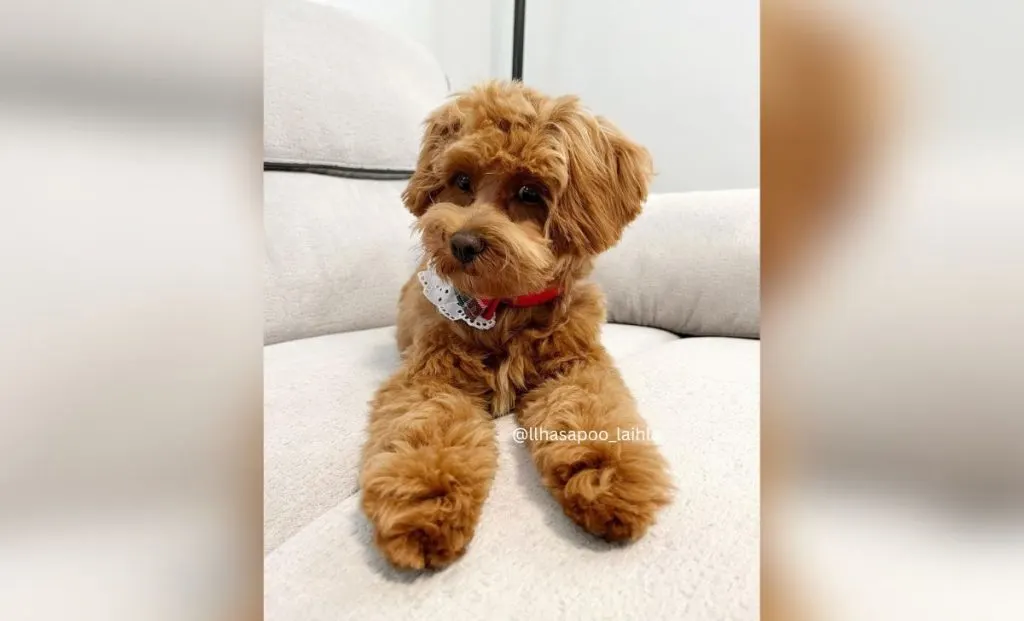
Red Lhasa Apsos can come in various shades, from deep bronze to almost mahogany. Many people think they have brown puppies when, in fact, what they are looking at is a red Lhasa Apso! This is how dark this color can be.
Some people might confuse red Lhasa Apsos with red Shih Tzus, given that red is one of the most common Shih Tzu colors.
And, you’ve guessed it, these doggies can have white markings, as well.
5. Red Gold Lhasa Apso
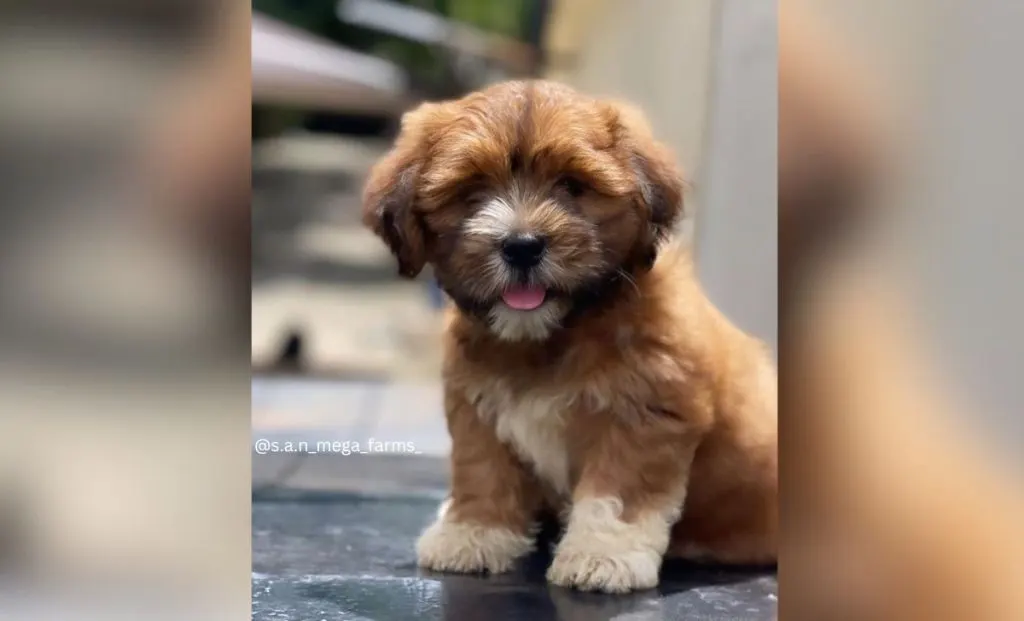
Red gold Lhasa Apso is a rather unique doggie.
Due to its long coat, the dog will seem to be ginger in color. However, its fur actually consists of a red base coat and golden hairs sprinkled across its body.
This is one of the most vibrant Lhasa Apso colors. The red hairs will be very shiny, and the gold color will give some additional dimension, making these small pups stand out from the rest.
6. Cream Lhasa Apso
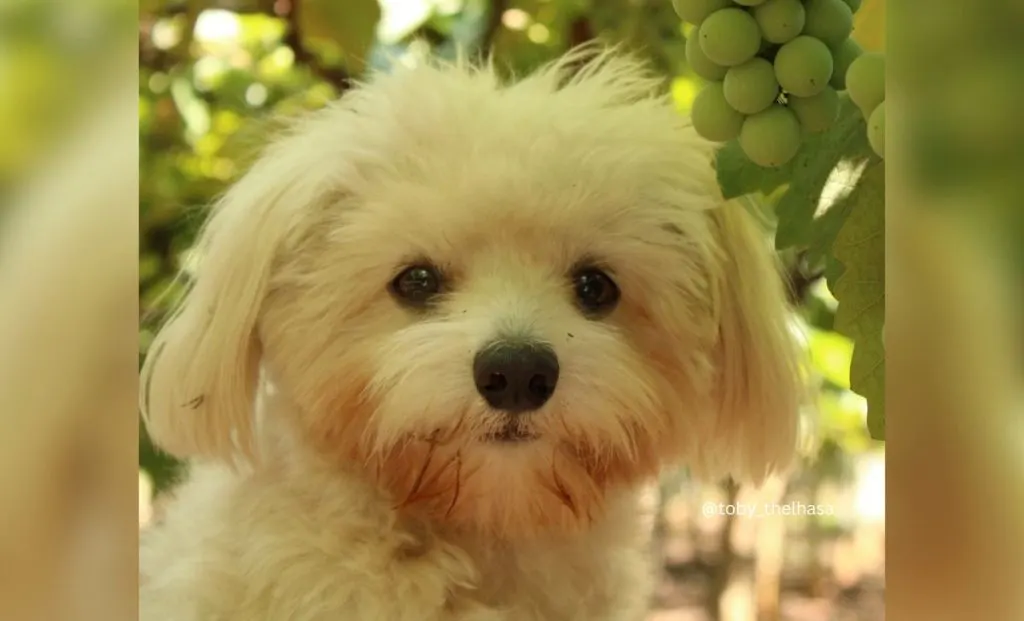
Here we have it: The most common hair color in Lhasa Apsos in the world!
Cream Lhasa Apsos are so popular that many owners don’t realize they can come in other hues.
These pups can have white markings on a cream or beige base color. However, as white and cream are so similar, a dog might appear to be solid-colored at first look.
Some black hairs are also possible, especially around the dog’s muzzle and face.
7. Grizzle Lhasa Apso
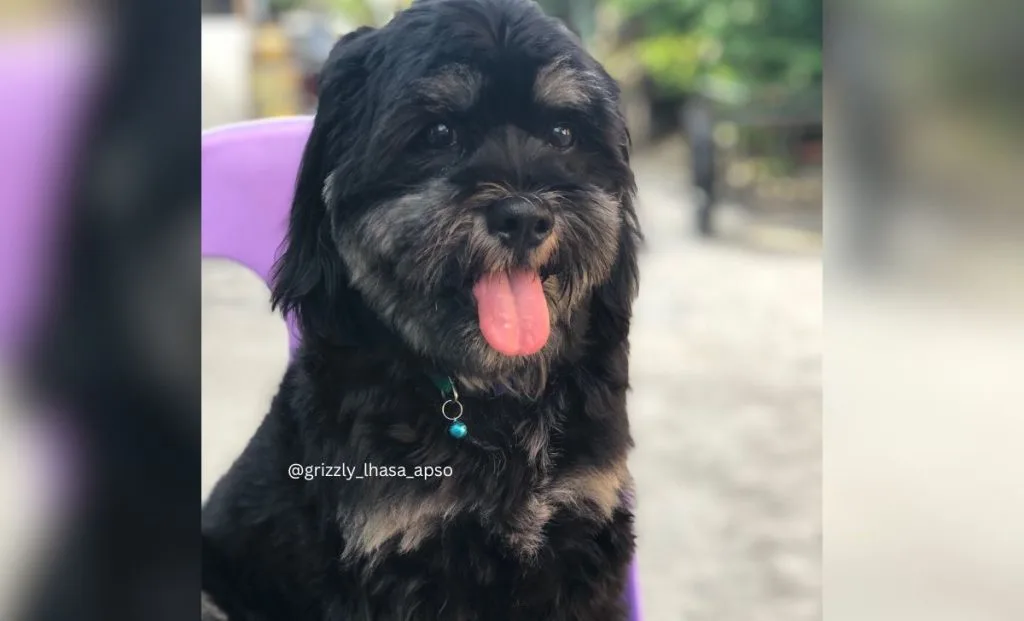
Grizzle is a coat color that doesn’t appear in many breeds. Luckily, our beloved Lhasa Apsos are among them!
This can be a very difficult color to explain. A grizzled puppy coat is a coat of many colors that are sprinkled around the dog’s body without any pattern.
During daily grooming sessions, you’ll notice your pup’s coat consists of hairs in various colors, such as black, gray, white, tan, and even cream!
White markings are possible and are usually located on the dog’s face and chest. Still, they can be hard to differentiate, considering just how much is happening with the dog’s coat on its own.
8. White Lhasa Apso

Solid white is a rare color in many dogs. However, a few breeds that are in small size can come in this shade, and Lhasa Apsos are among them.
While there is some possible darker shading, it should be warm in hue and barely noticeable. Anything darker than this would be considered a particolored pup.
It’s important to note that the white color in Lhasa Apsos is caused by a recessive gene and not by canine vitiligo, albinism, or some other genetic condition that might also impact a dog’s health.
Non-standard Coat Colors
There are also a few colors that can be naturally found in the Lhasa Apsos’ genetics that are recognized by the AKC but are not considered standard.
This is usually because the color is connected with some health condition or is a sign that a dog was mixed with some other breed several generations back.
Non-standard colors are not prohibited by kennel clubs. They are simply considered undesirable. Many breeders will still sell puppies in this color, and this doesn’t mean they are scammers or irresponsible.
The only difference is that you won’t be able to take these dogs to participate in dog shows.
1. Blue
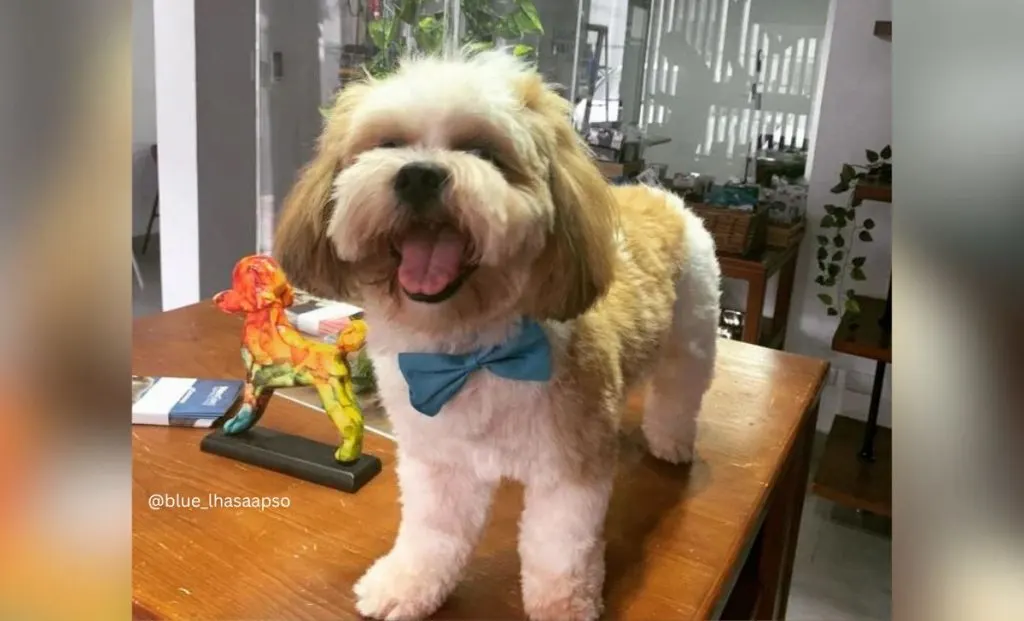
Blue is, in fact, a black coat that has been diluted to a cold, gray shade that has a bluish tint.
You can recognize that a dog is truly blue by looking at its nose and paw pads. The blue dilution gene affects all of the black pigment on a dog’s body. This includes his skin, resulting in a blue nose, mouth, eye rims, and even dark blue eyes!
Not only that, but this means that the presence of black hairs isn’t possible in these pups. If you see any black hairs or a black nose, chances are the dog is gray, charcoal, or silver.
Just like in black Lhasa Apsos, white hairs are allowed on these dogs.
Keep in mind that the black dilution gene is connected with a few rare health conditions – most notably, color dilution alopecia (CDA). Fortunately, CDA is very rare, even in blue Lhasa Apsos, and most blue dogs will live their entire lifespan without getting it.
2. Charcoal
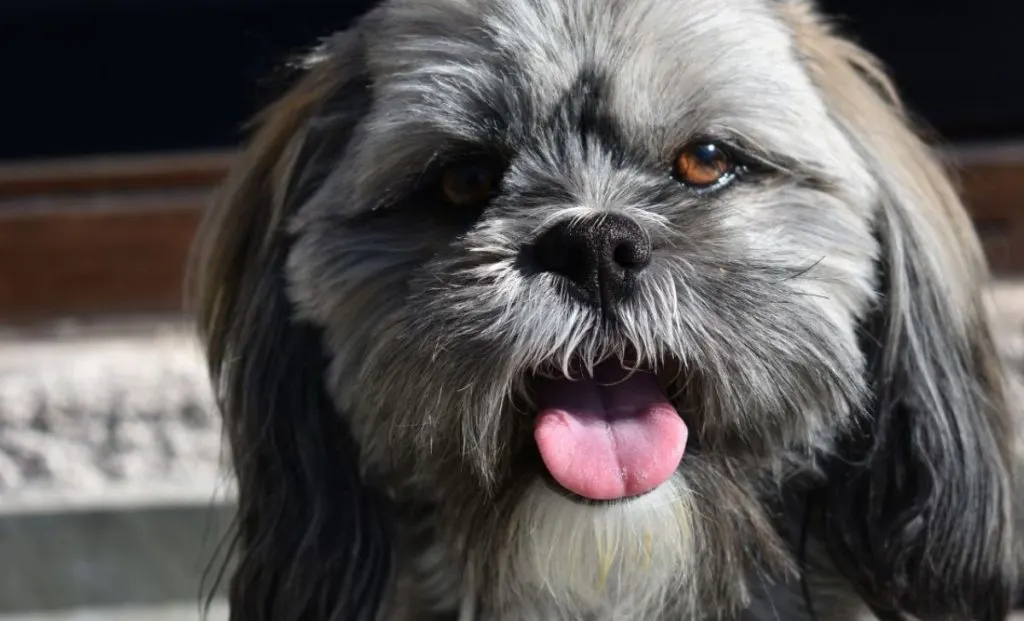
Charcoal is a rare shade in the dog world, and the same goes for Lhasa Apsos. This is a light to dark slate gray color with cream or white markings on their ears. The rest of their body will be solid-colored.
While you might confuse these pups with blue doggies, their color is caused by a different set of genes. They aren’t the result of a blue dilution, meaning they will have black noses and not blue ones.
3. Gray
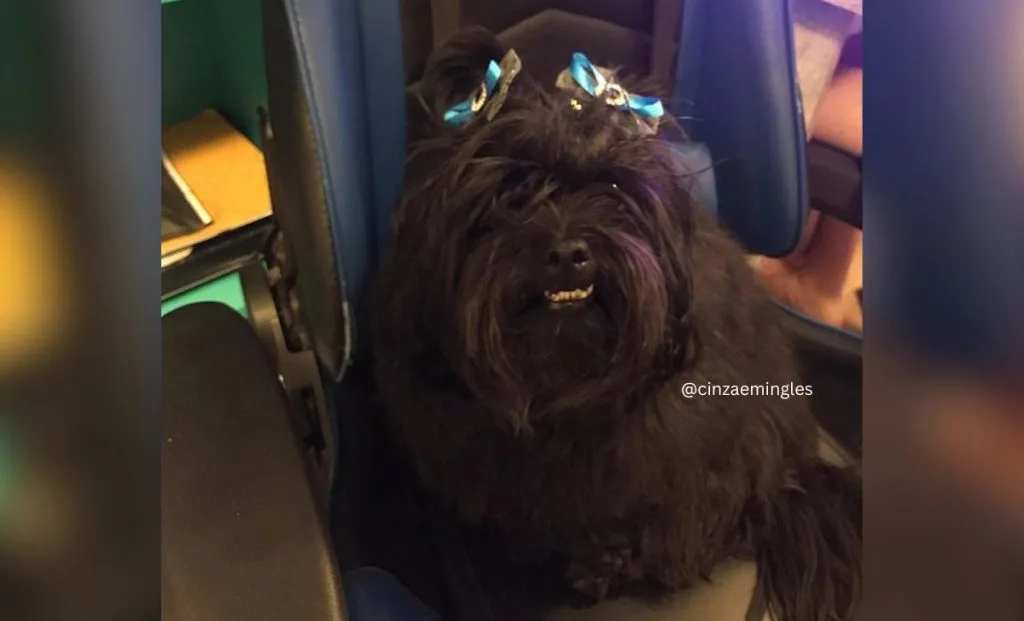
Gray Lhasa Apso puppies closely resemble their charcoal counterparts, but their coat is lighter in shade. Also, they can have white markings all over their bodies. Cream markings are unlikely in this coat color.
Many Lhasa Apso dogs that were born in black coats will experience some type of graying as they switch to their adult coats. This can surprise or even shock new owners who aren’t aware of this color change in this breed.
While this color change is not as prominent as in Shih Tzus, it can still happen. As such, many gray Lhasa Apsos were originally born black or dark gray.
4. Liver
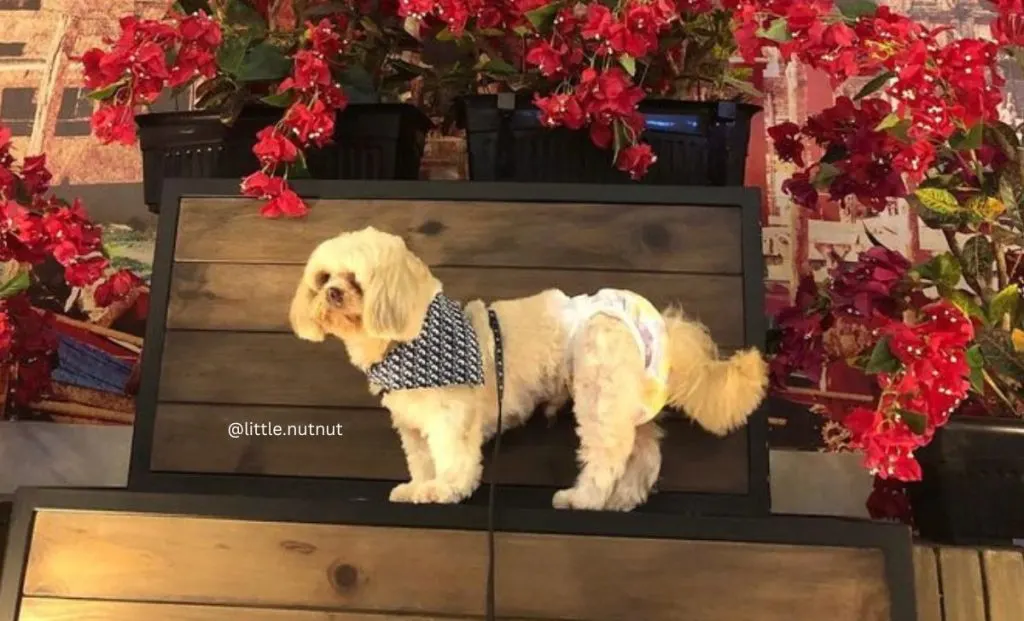
The liver color is also the product of dilution genes, but this time, the black was diluted to a deep red or chocolate shade.
Just like in blue dogs, this dilution will affect the dog’s skin, turning his nose and other exposed parts into a brown color.
Most liver Lhasa Apsos aren’t solid in color but have white markings on their bodies. Cream and tan points aren’t common.
5. Silver
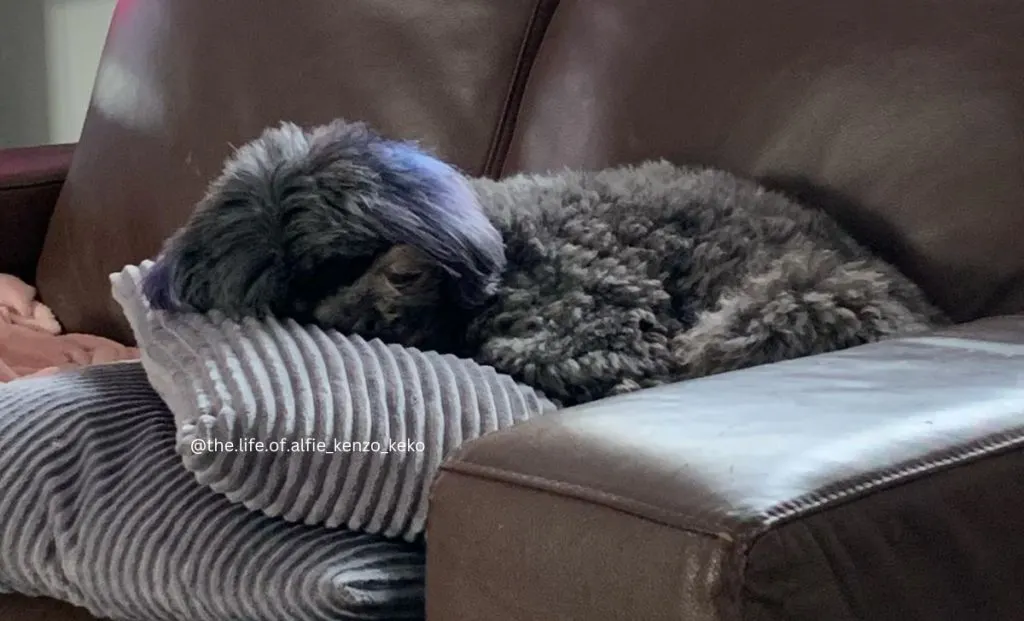
While you might think I am just repeating myself now, silver is, in fact, not the same as blue, charcoal, or gray coat.
What makes it stand out is its light gray undercoat with a topcoat that comes in many shades. In fact, one might say silver pups are quite similar to grizzle ones!
Another unique feature is the silver coloring on the dog’s tail, something that isn’t common in gray or charcoal pups.
As you might’ve noticed, silver-colored coats in Lhasa Apsos are quite different from silver coats in other dog breeds that are a standard shiny gray shade.
Lhasa Apso Markings
The Lhasa Apso coat comes in many shades, but you can find a huge marking choice in this breed, as well.
Lhasa Apsos in solid colors are extremely rare. Most pups have some type of markings and pattern on them.
According to the AKC, these are allowed markings in this breed:
White Markings
White markings are the most common types of markings in Lhasa Apsos. In fact, they are so common that all coat colors can have them!
No matter the base shade, white markings are most commonly found on the dog’s chest, muzzle, and tip of the tail.
Black Mask
Next to white markings, a black mask is the most common pattern in these small dogs.
When a dog has a black mask, black hairs will cover its muzzle and chin and sometimes go all the way to its eyes.
Most dogs with a black mask also have some black shading on their ears, backs, and tails.
Sable
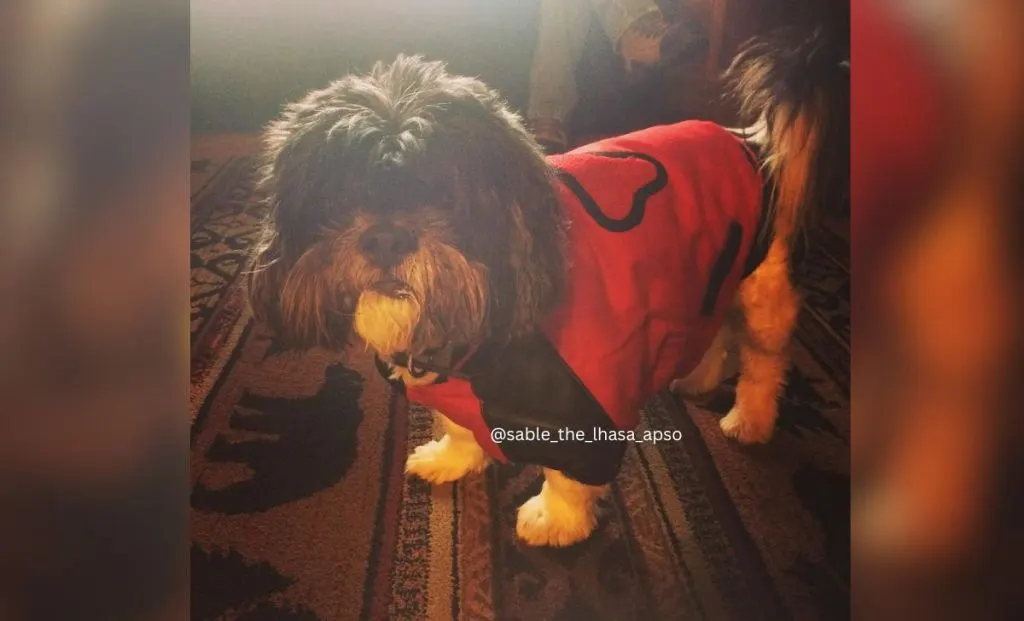
Sable is not a pattern that’s as easy to notice as the other ones on this list. This is because a sable coat has two-colored hairs, and not two colors that are distributed on the dog’s body.
In other words, sable is when a dog’s hair, which can be in any color, has a black tip.
Sable pattern is very common in the Lhasa Apso breed, and it’s typically found on cream, red, gold, and gold-red base coats.
Black Tips
Black tips might be confused with sable markings. However, they are found only on the dog’s face, ears, and tails.
One might say they are a combination of a black mask and a sable pattern!
Parti-color
A part pattern is when a dog has two or more coat colors on its body, one of which is white, in more or less similar amounts.
Parti is quite common in cream Lhasa Apsos, but it can be found in any color.
Brindle
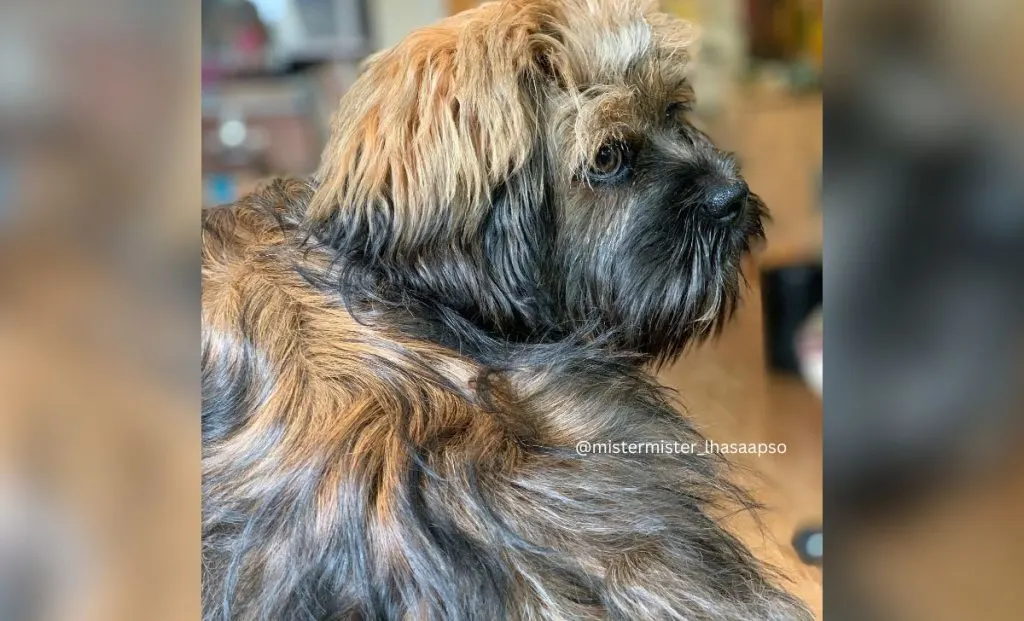
Brindle is quite a common American Bully color, but it is rare in Lhasa Apsos.
These dogs have tiger-like stripes on a base coat – although, in long-haired dogs, the pattern can be challenging to notice, and you might simply think your dog has some weirdly shaped parti markings.
Do Lhasa Apsos Change Color?
Is there any truth to the claims that a Lhasa Apso color will change over time? Yes, and no.
On very rare occasions, a dog’s dark baby coat will become gray over time. Some brown Lhasa Apso puppies might turn red or golden, as well. While this isn’t as prominent as in some other dog breeds, owners can still get quite scared when they notice this change.
Another color change that might occur in some Lhasa Apsos is that they’ll get brown hairs around their eyes that will turn to tan, cream, or white over time.
Neither of these changes should be a cause of concern. This is perfectly normal, and it doesn’t mean there’s anything wrong with your pup.
No matter your color choice, Lhasa Apsos make wonderful family pets, especially for people living in small apartments. As long as you’re sticking to reputable breeders, feel free to pick a color that you like the best.
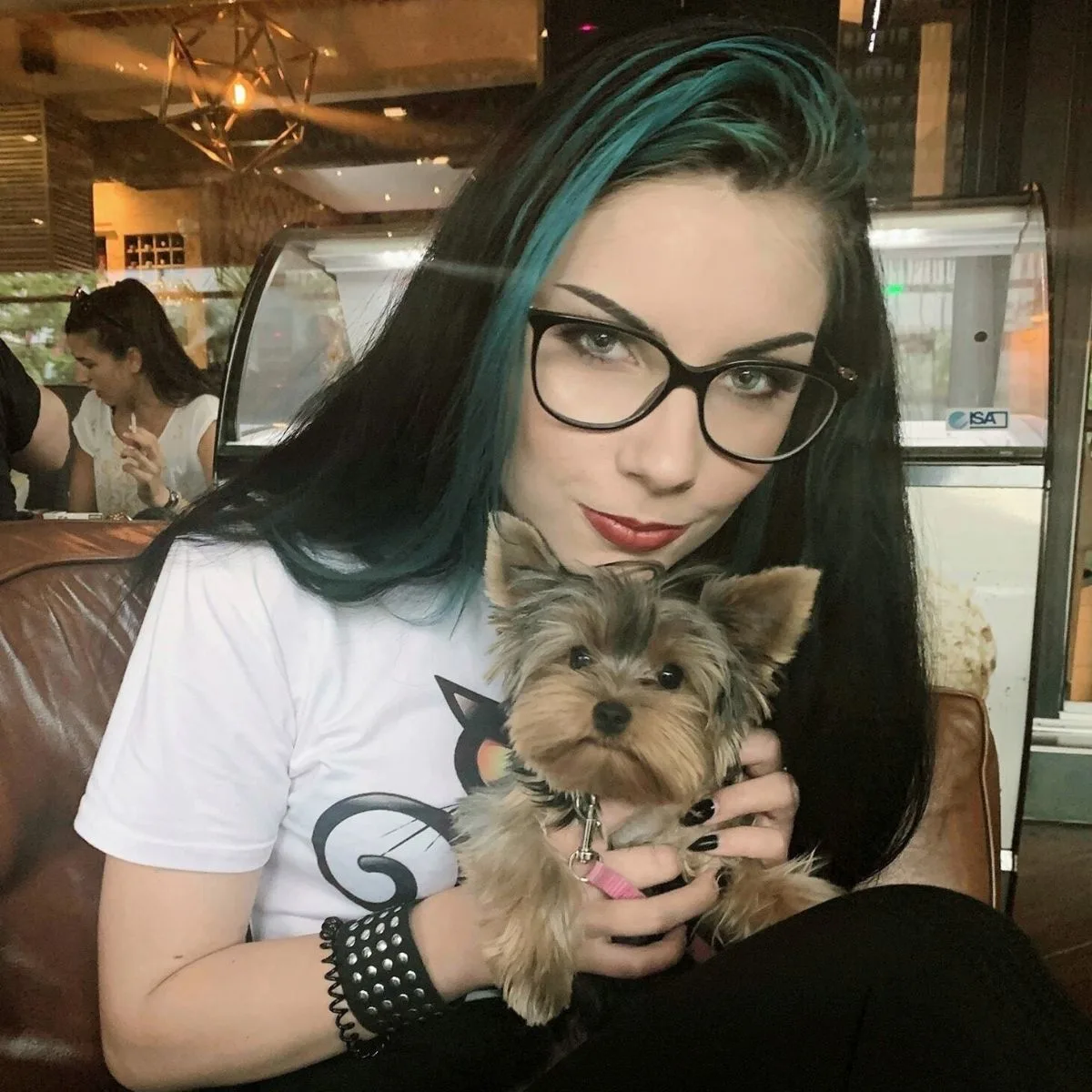
Vanja’s passion for writing started at an early age, which is why she pursued Journalism as her college degree. She can research any topic and find all the information before you bat an eye, which is a great thing for her job but a terrible one for her husband.
Even as a young child, she fell in love with everything fluffy – but dogs have a special place in her heart due to her childhood companion, a Corgie named Archie.
Motivated by her experiences and driven by a desire to give back to her four-legged companions, she spends her free time volunteering at a local dog shelter.
